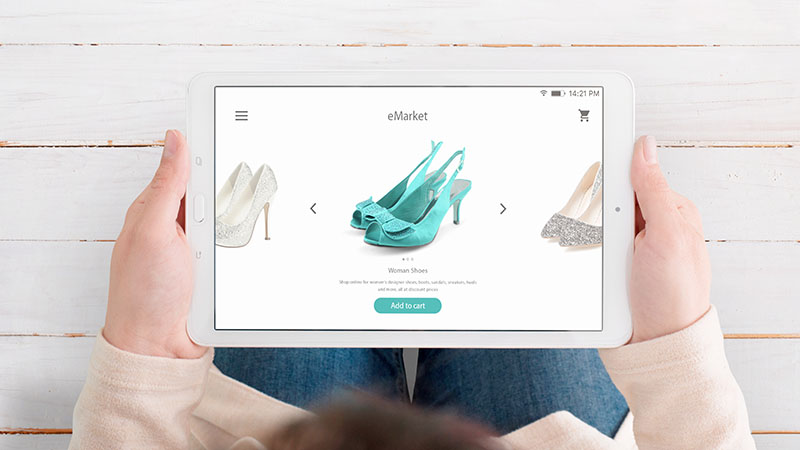Grow your business with the Discover newsletter
Logistics advice & insights straight to your inbox
Subscribe now
It’s no secret that the pandemic has been e-commerce’s big driver. Though online shopping was already booming, 2020's e-commerce growth rate accelerated at record levels. With stores closed, even those previously reluctant to shop online were nudged to do so out of necessity, and now the convenience of doing so has been felt, habits are likely to stick.
So, who are these new online shoppers and where have they been hiding this whole time? Introducing the baby boomer generation – or “silver surfers”, to give them a slightly cooler name. Baby boomers are the generation generally defined as people born from 1946 to 1964, during the post-World War II baby surge. Today they are aged 57-75 years old.
According to data from the NPD Group1, consumers aged 65 and older are now the fastest-growing demographic of online buyers. They spent 49% more on the web in 2020 than the year prior, and the frequency of their online purchases also jumped 40%2. On average, these consumers spent a total of US$1,615 each online from January 2020 to October.
These are exciting figures for e-retailers looking for new sales opportunities. But with the pandemic waning (hopefully), the question turns to whether the trend will last. Older people have been at the greatest risk of getting seriously ill from Covid-19, so many have stayed at home to protect themselves. But post-Covid, will they all simply return to their in-store shopping habits at the expense of online? Not according to recent consumer research which found that nearly half (47%) of baby boomers are planning to increase their online shopping after the pandemic.3 So, with that in mind, let’s dig in a little deeper to explore their online behaviors so that you can position your business to capitalize on the trend.

During the pandemic, online shopping for staple items has become more deeply entrenched amongst silver surfers. As with all demographic groups, they have spent more on food delivery, groceries, cleaning supplies and personal hygiene products. But there has also been an uptick in purchasing of non-essential items, too. Global research by The Economist4 looked at product categories with the biggest increases in online spending share, by generational cohort, in June-August 2020 compared with January-March 2020. It found, amongst baby boomers, books, toys and games increased by 23 percentage points (pp); footwear, clothing and accessories by 21pp; and consumer electronics and appliances by 17pp.
Despite being the wealthiest group (in the US, for example, boomers hold a whopping 70% of the disposable income5), they are still price savvy. In fact, 42% of boomers surveyed said lower cost is a primary factor when shopping cross-border, versus just 32% of those in younger age groups6. Consider this when pricing your products, and look at what discounts and delivery prices you can offer to attract older shoppers.
Though there may be some identifiable trends in silver surfers’ budgets and spending habits, it’s important not to take a “one-size-fits-all” strategy when targeting the group. Today’s boomers are experiencing a unique combination of life events – getting divorced (and perhaps remarried), watching their children fly the nest, switching careers, and becoming grandparents.
Thus, age is an oversimplistic way to treat this generation. There are diversities in their needs, habits and motivations when shopping online so, as with all your customers, you should look to testing and feedback to discover what works and what doesn’t. Do your research to find gaps in the market where older consumers are not being catered to, and then diversify or expand your product line to meet the need.
Remember, too, that older shoppers tend to be loyal to brands they have purchased from for a long time. To overcome this, you’ll need to really home in on your brand’s USP and structure marketing activity around it. Let’s take a look at some other considerations your e-commerce business should take in when targeting the silver surfers.
As many silver surfers are new to online shopping, you should be thinking about how you can tweak your e-commerce website to optimize the customer experience for them. Make sure it’s user-friendly with easy navigation, and include a feature that allows visitors to increase the text size, if needed. How-to guides and video tutorials are great extras that will also deliver a good user experience.
Those new to online shopping naturally gravitate to online marketplaces, where searching and browsing for products is user-friendly. Check out our exclusive guide to the leading marketplaces to learn the benefits they could bring your business.
Trust
Online security is a big issue for silver surfers – in contrast to the younger, digitally-native generation who are used to sharing every aspect of their lives online. In fact, research shows that security concerns and risk of identity theft are big deterrents to the older generation doing business online – whether banking or shopping7. To counter this, promote your website's safety with transparency around your data handling policy. Add copy to your website about the security steps your business takes when handling personal information such as credit card details to reassure customers. Additionally, allowing your customers the option to pay through a known and trusted platform such as PayPal8 can increase your conversions.

Every generation has its own preferences for online payment methods. Generally speaking, the more payment services you offer your customers at checkout, the better, as online shoppers are 70% more likely to finalize a purchase if their preferred payment method is displayed as an option9. That said, there are generational preferences, too. Baby boomers are most comfortable shopping via credit or debit card, with 65% of global e-commerce shoppers ages 57-75 having used one or both of the two to make cross-border purchases. In contrast, only 3% of boomers have used a “buy now, pay later” service10 – proof, perhaps, of their financially stable status.
This should be at the heart of your business strategy, whoever your customers are, but research has found that boomers are the generation most likely to abandon a purchase following a subpar customer experience11. What’s more, they’re not fans of the new wave of AI-powered chat bots, instead preferring good old fashioned human-to-human contact: 70% of baby boomers prefer to talk to a human agent rather than an automation tool such as a self-service bot (compared to only 54% of millennials)11. Thus, it may be worth your while investing in customer service agents, or combine the two: a simple “speak to a human” button during an automated live chat interaction, for example, will keep customers happy. If this level of service is not in your budget, you can instead “humanize” the automated customer service you offer by carefully curating the language to be warm and engaging.

Remember, the customer experience is not over once they click “buy”. Delivery is a whole new opportunity for you to keep them happy and ensure they return to your business again.
A study by the National Retail Federation12 found that baby boomers demand free shipping the most, with 88% expecting it from online stores. That compares with 77% for Generation X, 61% for millennials, and 76% for Generation Z. Thus, offering free shipping at checkout could be a worthy investment for your business.
Boomers new to the online shopping process will appreciate transparency throughout the delivery process so be sure to offer full tracking and notifications of their order. This assurance will go a long way in turning them into loyal patrons.
Many older people are still self-isolating or taking precautionary measures against Covid-19, so keep these hygiene concerns in mind, too. If you have a retail outlet, offering BOPIS (buy online, pick up in store) will be popular. Alternatively, utilizing packstations for your business will help alleviate customers’ hygiene fears, whilst also giving them the benefit of being able to pick up their orders at a time convenient to them – both positive experiences that will keep you front of mind when they choose a retailer in the future.

Don’t fall into the trap of thinking social media is just for the youngsters. In the US, for example, 86% of baby boomers use social media daily13, so your social media strategy should keep them in mind.
Social media platforms have the benefit of offering age-based targeting, helping your business to zero in on the silver surfers. What’s more, advertising on Facebook and Twitter is currently cheaper than usual as brands have cut down their budgets amidst the pandemic, so now is a great time to negotiate some great cost-per-thousand (CPM) rates.
Ensure the ads you buy are tailored for the boomers with dedicated click-through landing pages that speak specifically to their generation. You can also experiment here with calls-to-action, discounts, and coupons, to gain a better understanding of what works best with this market – learnings you can utilize in the future.
As we move into the future, and a possible “Covid-free” world, the big question will be whether customers new to online shopping during the pandemic will stay once stores reopens. That’s where retargeting the new customers you have acquired during this time will pay off. Stay in contact, and send special deals and discounts to ensure they keep coming back.
1 - NPD Group
2 - NPD Group survey, Business Insider, January 2021
3 - SDCExecutive, October 2020
4 - The Influential Shopper, The Economist, 2021
5 - Buxton, Accessed April 2021
6 - Business Wire, February 2021
7 - Malware Bytes, March 2019
8 - PayPal
9 - 2Checkout blog, June 2020
10 - Just-Style, March 2021
11 - The Future of Commerce, Accessed April 2021
12 - ChainStoreAge, January 2019
13 - The Manifest, July 2019